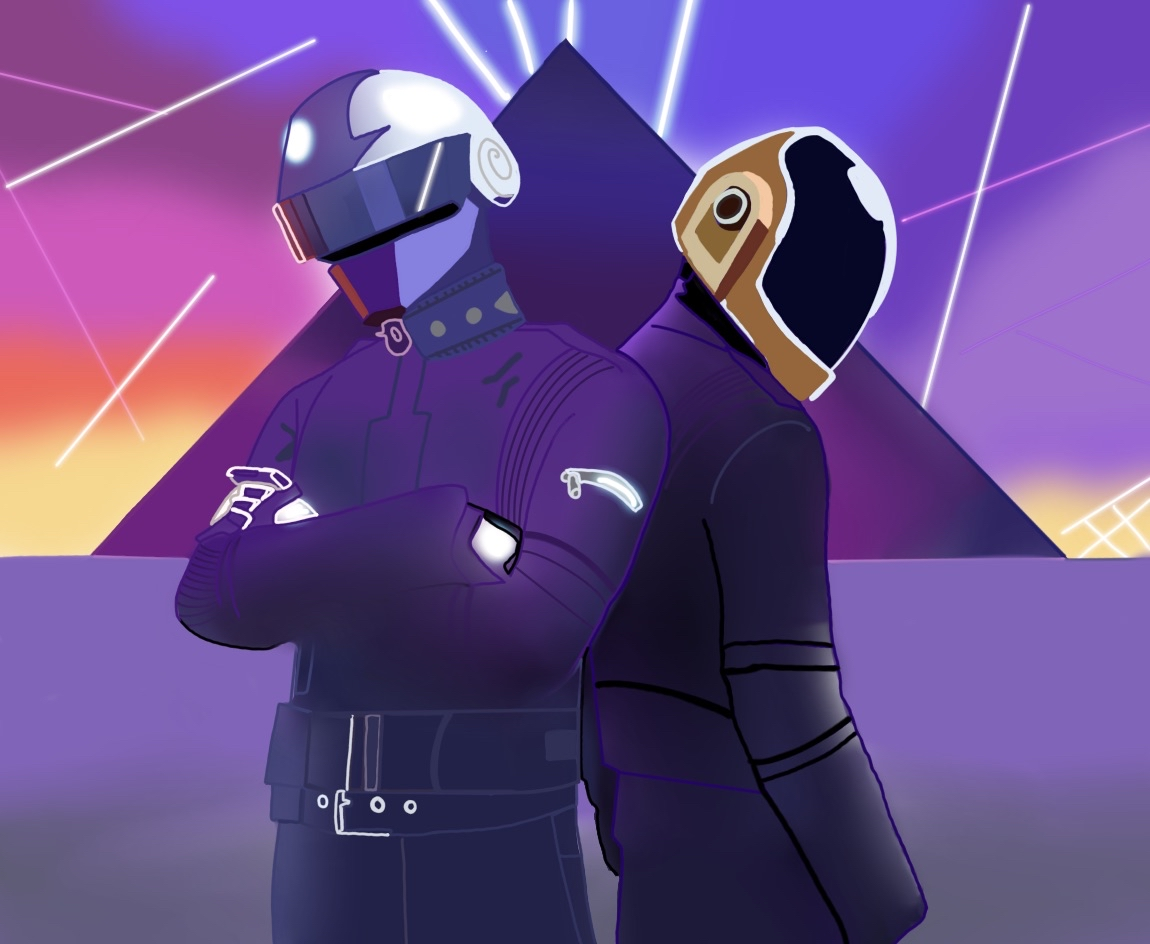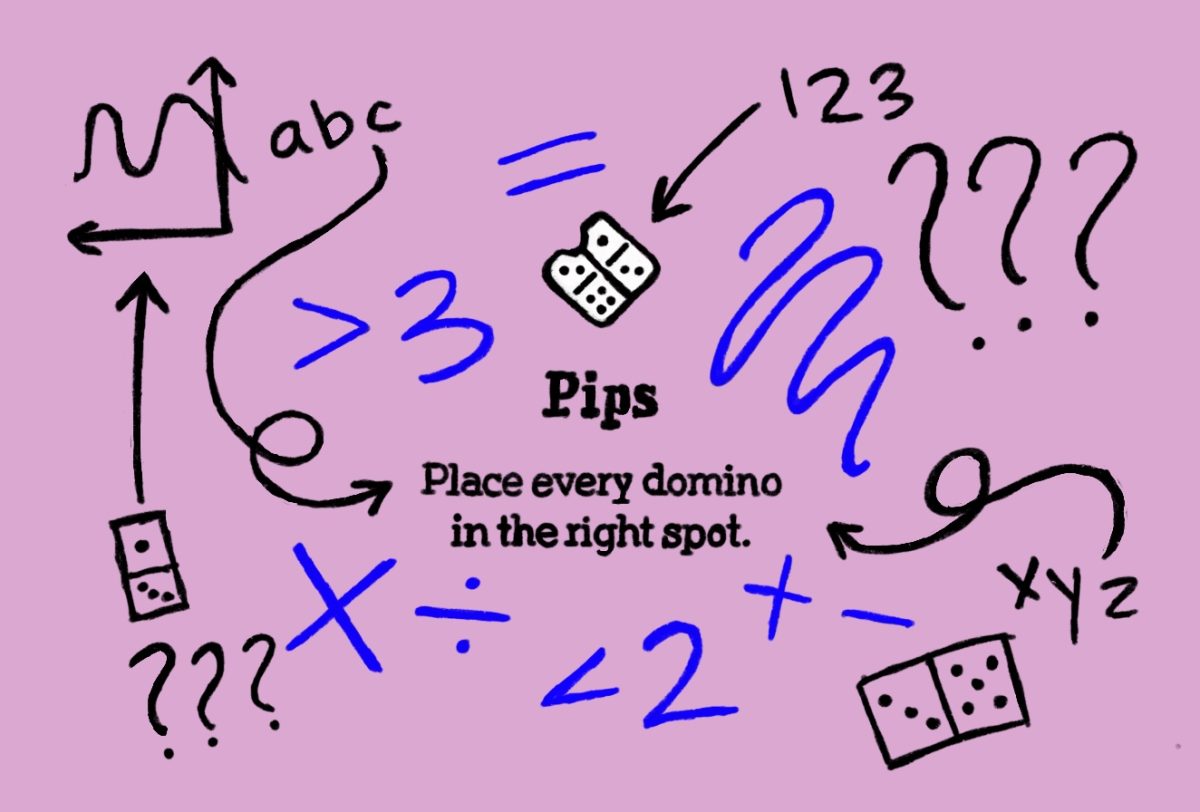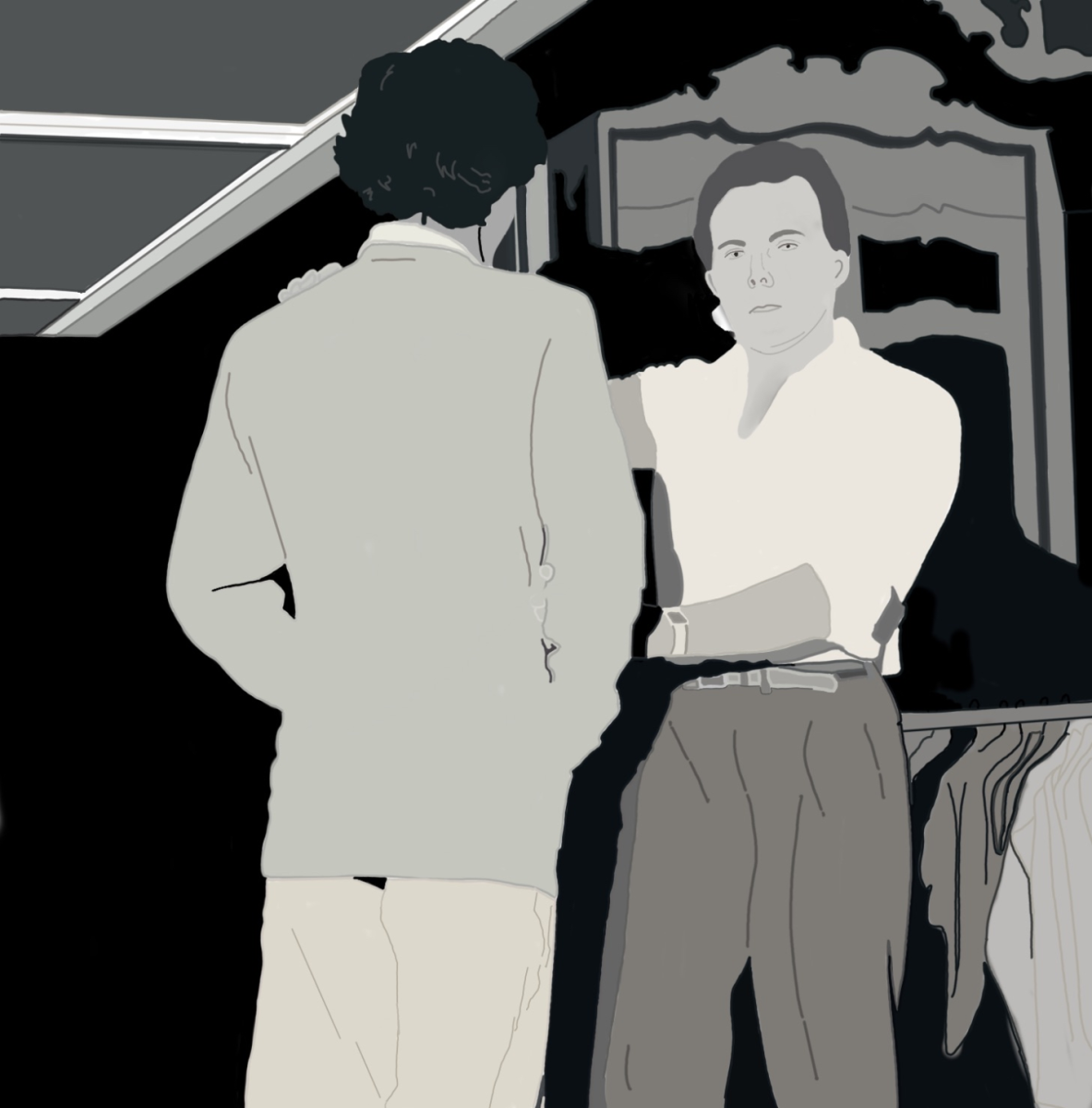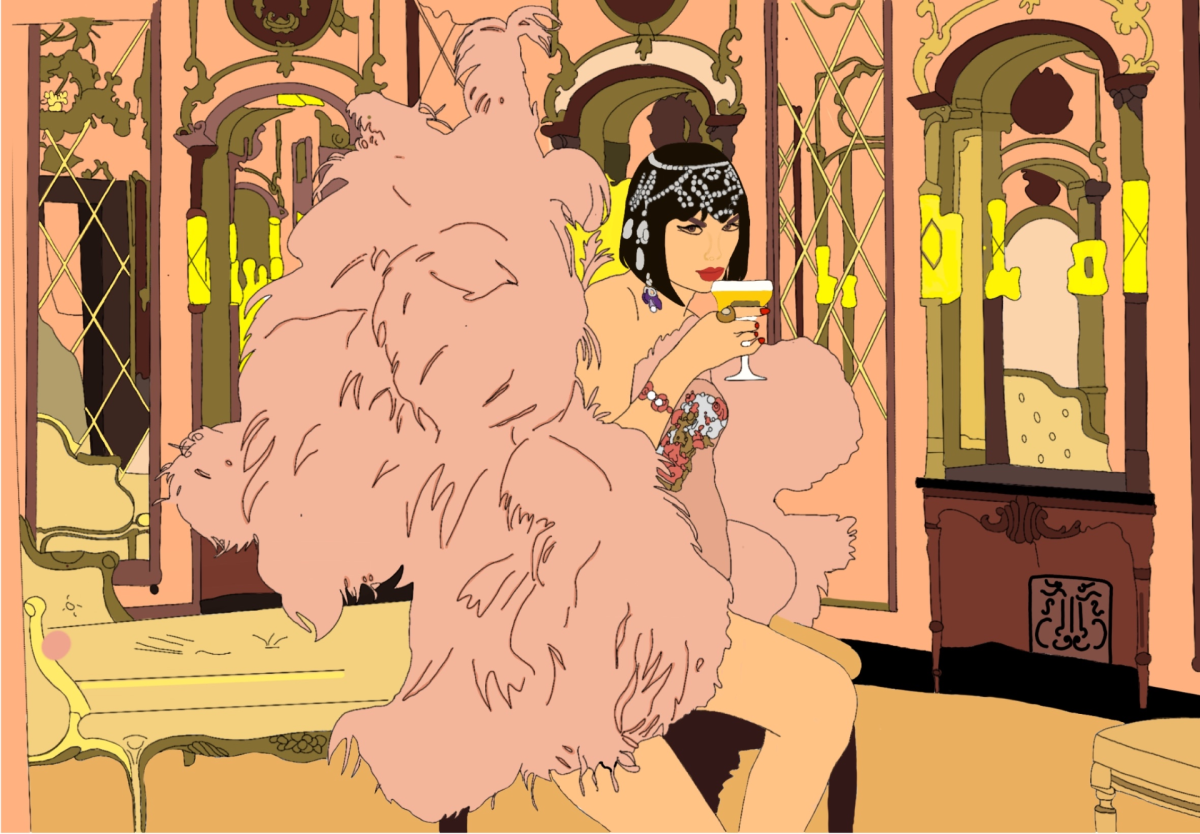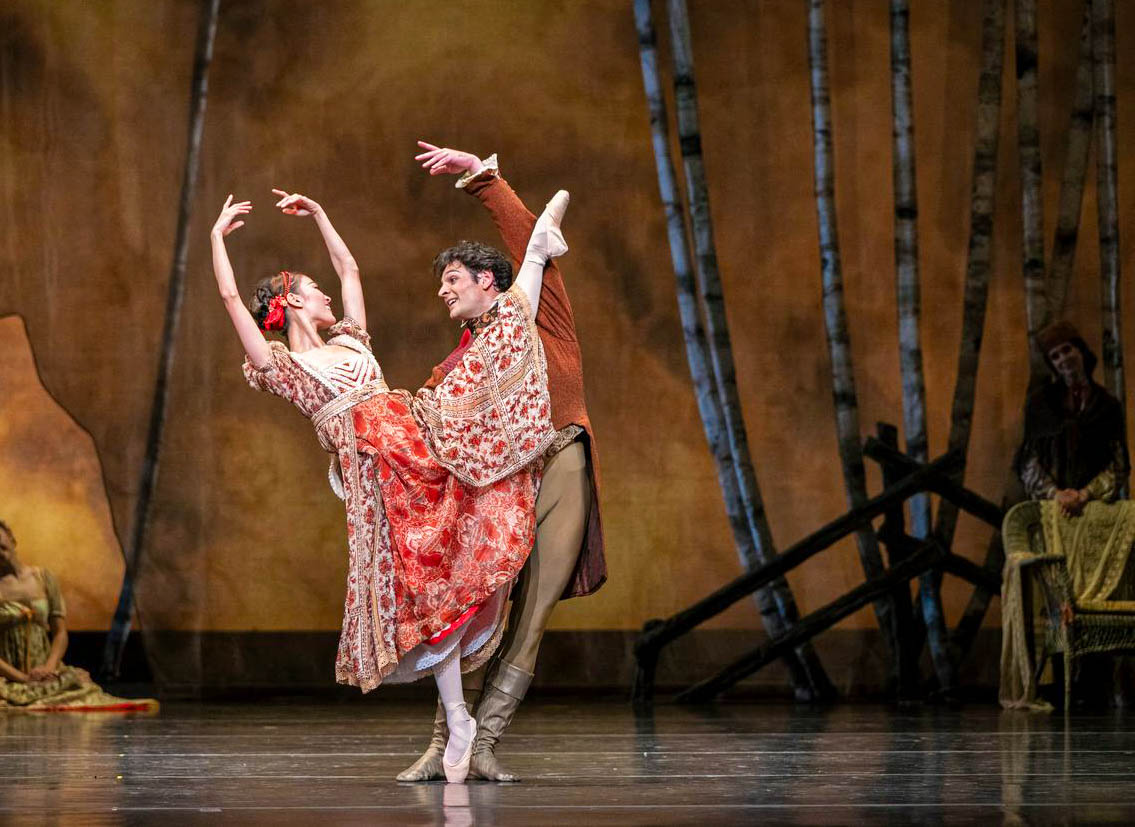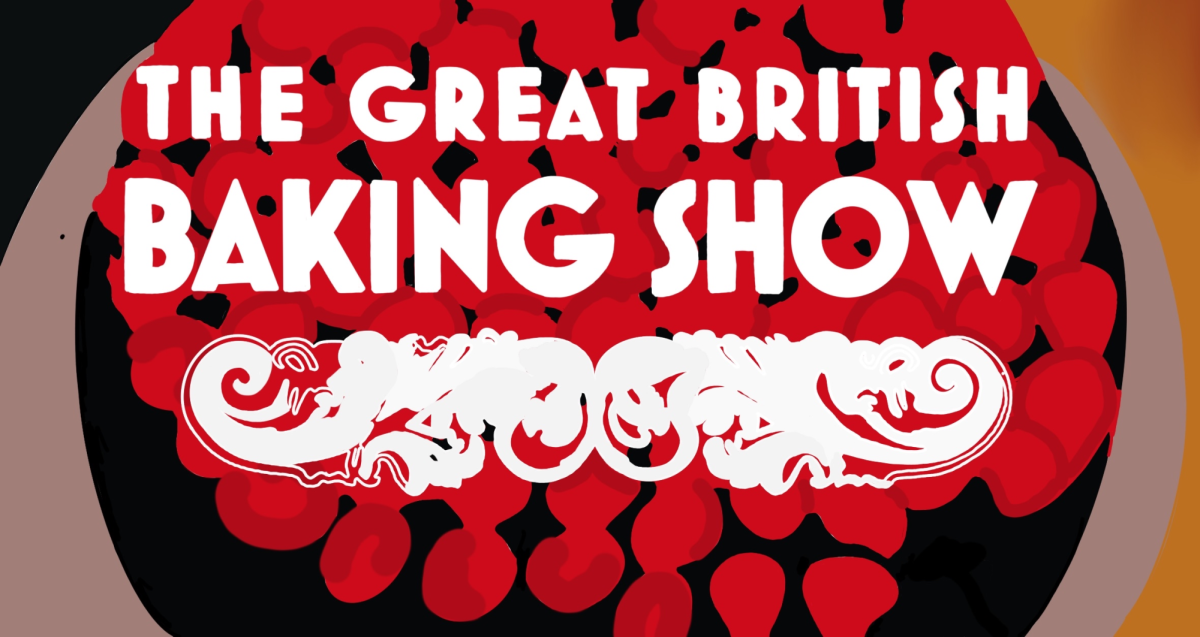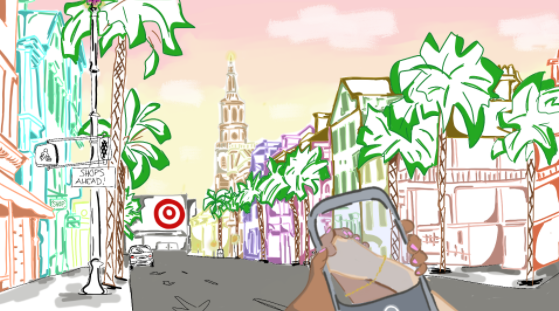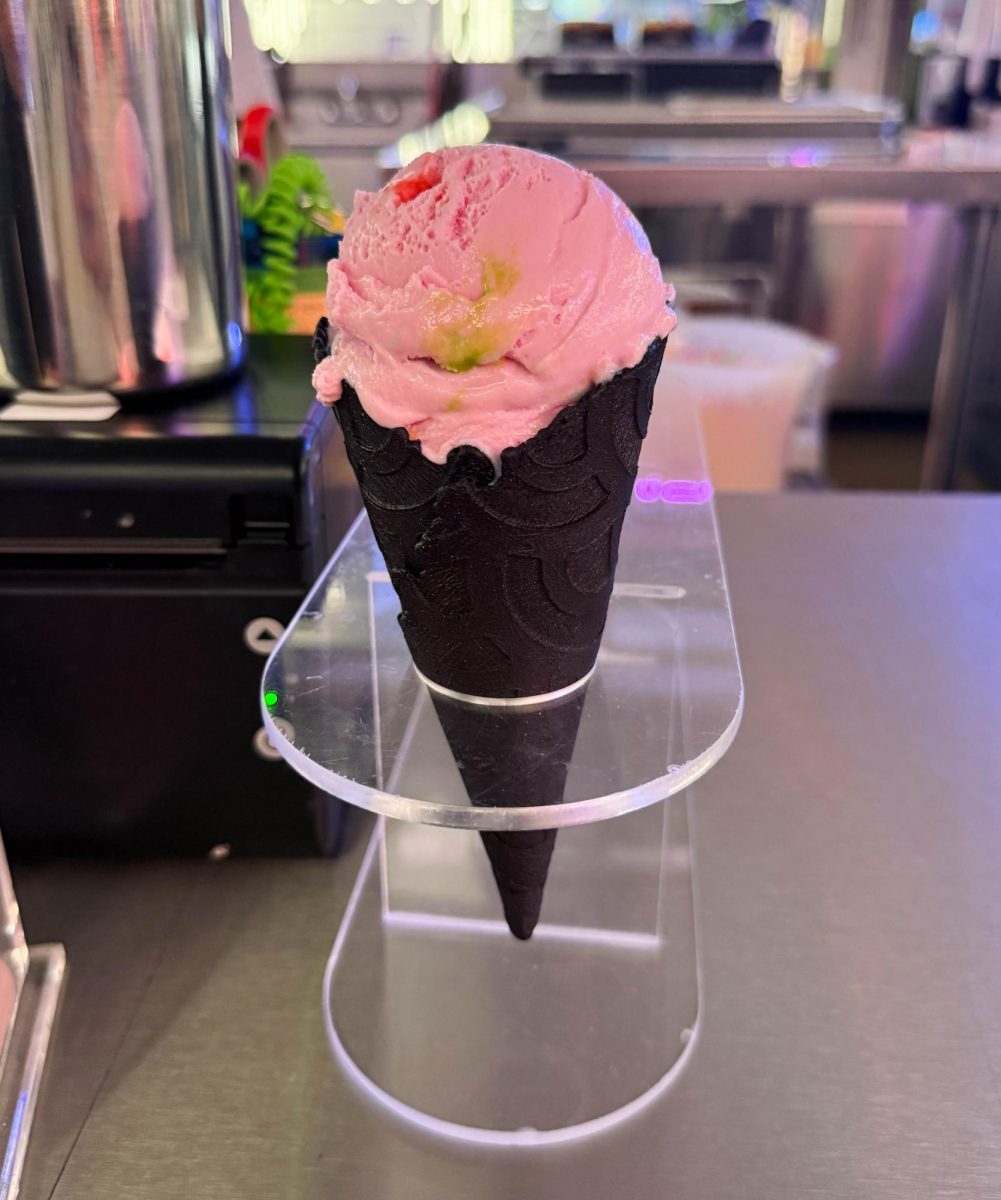In the exact same spot that Hero Robot No. 1 and No. 2, better known as the legendary french touch duo Daft Punk, left for the beyond in 2021, their helmets lay surrounded by fragments of metal, waiting for the player to hold down “X” and power them back on.
Waiting for the player to give life back to their music.
With teasers, leaks and rumors dating back to almost half a year ago, the Daft Punk Experience in Fortnite had a lot to live up to, and I am just as shocked as I am excited to say that the event was just shy of perfection.
Consisting of six different sections, each encompassing a different era of Daft Punk’s sound, the event far exceeded the typical Fortnite concert mold.
It wasn’t just a 20 minute show with half of a minigame crammed in to justify its video game format. In fact, it was far from that. Sure, previous concerts, such as Ariana Grande’s and the Chapter 2 Remix finale, have had some interactive elements — but they are nothing comparable to what Epic Games put up this time around.
To begin, the opening animation, which served as a direct continuation to the duo’s 2021 Epilogue, was nothing short of beauty – which is unexpected for a game that’s art style is inconsistently teetertottering between a vibrant cartoon and an attempt at a hyperrealistic still-life. Even though I was playing the game on an Xbox Series X, I was surprised that they not only took the effort to make the opening near-cinematic but that it didn’t make my TV explode.
The choice to set the opening to Contact, a relatively deep cut off Random Access Memories, is what brought the opening that extra mile. The track’s electric building perfectly fit the animation’s growing intensity as you got closer to the experience itself.
Once the animation ended, you were plunged right into the middle of the experience with the remaining five sections: Alive 2007 Arena, Robot Rock Arena, Daft Club, Around the World (LEGO) and Dream Chamber Studios.
The most traditional section of the event was the Alive 2007 Arena, which was a faithful recreation of the Coachella set/live tour of the same name. Despite some minor changes, such as “Touch It / Technologic” to remove some of its vulgarity, this aspect of the event was simple yet compelling — it was the same legendary live album with new, larger-than-life visuals to coincide with it.
If you had told me that the drumless edition of “Random Access Memories” would have been a substantial part of the event, I wouldn’t have believed you, but that’s exactly what the Robot Rock Arena was — and I loved every second of it. The wave-based minigame has the player attack various 8-bit, arcade-styled creatures using the stems to Daft Punk’s music. One enemy might need to be attacked with the drum loop of a song while another might need to be attacked by the lead, but you can never use both at once. This constant switch back and forth between no drums to no lead made me connect to certain Daft Punk songs in a way I never had before, listening to the intricacies and layers of each track much more deeply. Oh, and did I mention that the minigame itself is insanely addicting? The next two sections, the Daft Club and the Around the World LEGO music video, although inoffensive, felt “tacked on” in what was otherwise a well constructed event.
While the Daft Club was clearly intended to be a way to get certain deep cuts and various oddball songs into the event, it felt more like a creative map put together at the last minute than anything truly meaningful. I know I’ve praised a lot of the event’s simplicity, but there’s a difference between simplicity and nothingness. The Daft Club was okay, but that was about it.
The Around the World LEGO music video fell in a similar category to me. Hypothetically, this is something I should have loved – it literally combines two of my favorite things. But in this case, it feels like the LEGO video to fulfill some contractual obligation between the two companies. Sure, having official LEGO models of Daft is really cool, but it isn’t enough to save that aspect of the event.
The final section of the event, Dream Chamber Studios, however, was where the entire experience came together. The idea of the section, just like every other part of the event, was so incredibly simple: use the structure of Fortnite’s Jam Stage to create remixes and sample songs from Daft Punk’s entire discography.
While it may seem lazy to just directly rip another part of the game for the event, it works for Daft Punk on multiple levels. The duo’s entire career, as far back as Homework, has been based on sampling and remixing, so to essentially “sample” a gameplay feature from Fortnite in order to allow players to make their own music using Daft Punk’s work comes full loop in a way that is way more poetic than a Fortnite event should be capable of.
What made this event different from previous concerts was that it didn’t feel like Fortnite was trying to do something super extravagant or over-the-top for the sake of collaboration. It felt like a true celebration of Daft Punk’s nearly 30 year history as one of the most impactful electronic artists of all time, all while being accessible for completely free.
Over its two week span, the Daft Punk Experience connected millions of fans around the world to their music one more time.
Regardless of their robotic appearance, Thomas Bangalter and Guy-Manuel de Homem-Christo have shown that they are human after all – bringing an entire community together in a way no other event, or artist for that matter, ever could.


